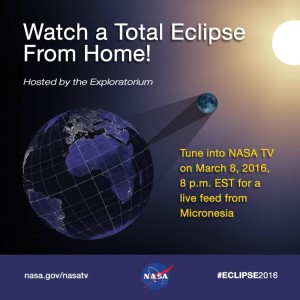WASHINGTON — Had your fill of politics for a while? Not to worry, as this Tuesday we have a trio of super sky events to take your mind off the continuing election year.
To update my previous story on the close approach of asteroid 2013 TX68 to our planet: a flyby was expected on Tuesday anywhere from 15,000 miles to 3 million miles. This wide range is due to lack of sufficient observations to precisely define the space rock’s orbit, but a clear miss was assured.
“2013 TX68 safely passed by Earth on Monday morning. According to the Minor Planet Center, the space rock’s closest approach occurred on March 7 at 13:42 UTC (8:42 ET) at a distance of 2,542,960 miles (4,092,497 km) from Earth, just a bit closer than the nominal 3 million miles previously estimated,” a news release from EarthSky stated.
Although the space rock safely passed us by, the Internet is still abuzz with end of the world chatter. If 2013 TX68 had entered the Earth’s atmosphere, it would have released about twice the energy of the 2013 Chelyabinsk bolide.
There is a total solar eclipse for areas of the Pacific and Indonesia taking place on Wednesday in their time zones, but occurs Tuesday in ours. We can’t see the eclipse in the DMV but we can watch it live (and safely) on the Internet via NASA’s telecast Tuesday night starting at 8 p.m. EDT.
If you happen to be reading this in an area that the eclipse is occurring, make sure you view the eclipse safely by following these eye safety guidelines. Failure to do so can result in injury to your eyes.
Be sure to tune in at 1 p.m. Tuesday for a Reddit Ask Me Anything session as solar scientists from NASA’s Goddard Space Flight Center in Greenbelt, Maryland, will be taking questions on the eclipse and the science observations that NASA will be conducting.
The next total solar eclipse will be August 21, 2017 and will occur in the United States. I will have much more on this as we get closer to the event.
If you have been outside at night recently when the skies are clear, you may have noticed a very bright “star” in the East. That “star” happens to be the planet Jupiter, and it will be rising at sunset Tuesday as it is at opposition, or directly opposite the sun.
King of the planets, mighty Jupiter will be in our sky all night in the coming months and will be the brightest object in the night sky — second only to the moon.
A pair of binoculars can show the four main moons of Jupiter discovered by Galileo in 1610 and any quality telescope will reveal details in the atmosphere of the gas giant planet.
You can determine which moon is which by using this nifty tool. It’s pretty cool to watch the moons change their positions as the night goes on.
Follow my daily blog and @SkyGuyinVA to keep up with the latest news in astronomy and space exploration. You can email me at skyguyinva@gmail.com.







